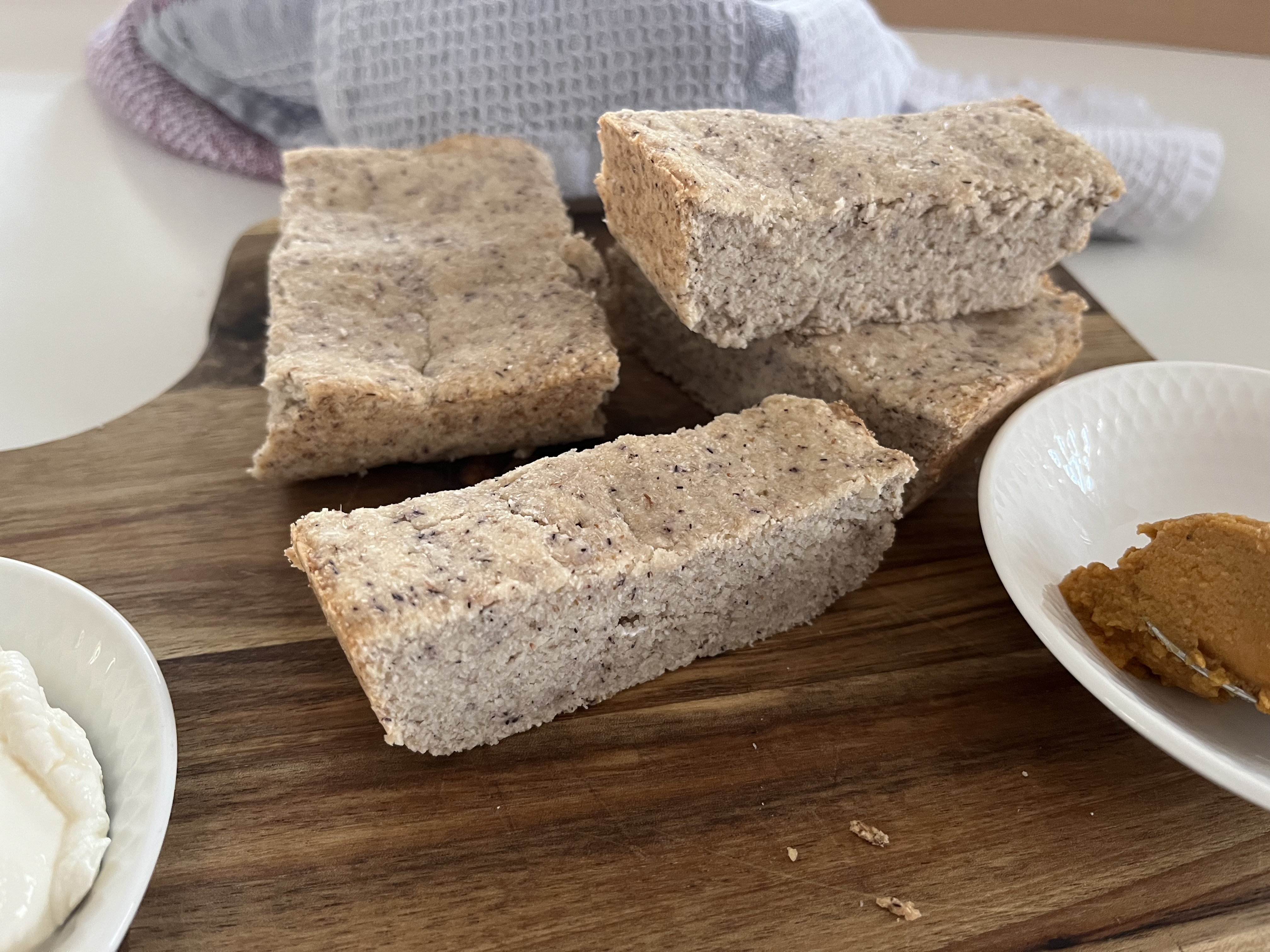 |
Nature’s Dessert Cookbook: Healthy, Delicious & Naturally Sweet Recipes Don’t want or can’t tolerate sugar alcohols and artificial sweeteners? This cookbook is for you! Every dessert is naturally sweetened with whole ingredients rich in fiber and protein, slowing sugar absorption and making them diabetic-friendly. It gathers your favorite recipes from the website—plus brand-new ones—all in one convenient place. Indulge in truly natural treats without compromise! |
 |
Diabetic Baked Goods: Everyday Bakes for Every Meal Diabetic cookbook designed to make healthy baking simple, accessible, and enjoyable. This collection of low-carb, high-fiber, and protein-rich recipes provides a reliable solution for those looking to enjoy diabetic bread and baked goods without blood sugar spikes. Every recipe includes a video tutorial, making it even easier to follow along and bake with confidence! |
 |
What Makes This Cookbook Different?
|
Cocoa Powder: The Benefits and Sweet, Versatile Solutions Desserts
Cocoa powder offers as many health benefits and as much flavor as cacao powder. There is the distinction between cocoa and cacao. While both terms are often used interchangeably, they refer to different stages in the chocolate-making process.
Cocoa powder is derived from roasted cacao beans, which are then ground into a fine powder. The roasting process reduces the bean's natural bitterness and results in a smoother, more familiar chocolate flavor. On the other hand, cacao refers to the raw, less processed form of the bean, which retains more of its natural antioxidants and nutrients.
When examining cocoa vs cacao, the main difference lies in the temperature treatment. Cacao is minimally processed and usually cold-pressed, keeping many of its nutritional benefits intact. Cocoa, however, undergoes higher heat treatment, which can lessen some of its nutrient density but makes it more palatable for broader culinary uses.

Cocoa and Cacao: Impressive Nutritional Profile
Despite the processing differences, both cocoa and cacao offer remarkable health benefits.1 Packed with antioxidants, these ingredients are known for reducing inflammation and fighting off free radicals that can damage cells. This feature is especially beneficial for diabetics, as oxidative stress and chronic inflammation can exacerbate complications.
Health benefits of cocoa powder extend beyond just its antioxidant properties. Theobromine and flavonoids present in cocoa can improve heart health by lowering blood pressure and improving cholesterol levels. Heart health is crucial for diabetics, who are at a higher risk of cardiovascular complications.2
The nutritional profiles of cocoa powder and cacao powder are impressive. Cacao powder is richer in magnesium, iron, calcium, and fiber compared to cocoa powder. However, cocoa powder typically has lower caloric content and offers a slightly higher degree of protein, making it a versatile and balanced choice for individuals watching their weight and blood sugar levels.
When choosing between cocoa vs cacao for your recipes, consider what you want to achieve. If higher nutrient retention is your goal, raw cacao might be the better option. However, if you're looking for a richer, milder flavor for desserts, cocoa powder may be more suitable.
Cocoa Powder: Easy and Rewarding Use

Incorporating cocoa powder into diabetic-friendly recipes is both easy and rewarding. Its deep, satisfying chocolate flavor can elevate various desserts without the need for added sugars.
There are many ways to use cocoa powder.
It can be blended with unsweetened almond milk to create a warm beverage. Adding a touch of vanilla powder can enhance the flavor, resulting in a delicious drink that won’t disrupt blood sugar regulation.
You can also make a delightful homemade pudding with chia seeds by combining chia seeds (a natural thickener) and cocoa powder with unsweetened almond milk, along with a sweetener of your choice.
Cocoa and mixed berries paired with Greek yogurt make for a convenient and nutrient-rich dessert. My child isn’t particularly fond of that combination, but for my own enjoyment, I add chia seeds, flaxseeds, or sunflower seeds. I sweeten it with a little date syrup or honey, and I'm ready to start the day on a cheerful note. Diabetics can do the same.
Additionally, cocoa powder can be incorporated into various baked goods by substituting a portion of the flour with cocoa powder. This can also be done with pancakes to enrich them with beneficial nutrients while simultaneously reducing the intake of empty calories.
Things to Keep in Mind
Cocoa powder's slightly bitter taste requires careful consideration when baking. While I love its rich color and chocolatey depth, it does necessitate a bit more sweetener. To maximize cocoa's benefits while minimizing added sweeteners, I use it judiciously, relying on natural sweeteners like dates and coconut blossom sugar. The resulting flavor combination is irresistible, but mindful portion control is crucial, especially for those with limited physical activity or weight concerns, due to the impact on caloric intake and glycemic load.
Additionally, despite its many advantages, moderation is key when consuming cocoa powder. Although low in sugar, cocoa products can be high in fats. Ensure portion sizes are controlled to maintain a balanced diet. There are reduced-fat versions available on the market, so you can choose the cocoa powder that best suits your nutritional needs and preferences.
Always remember to keep an eye on the labels. Products labeled "sugar-free" aren’t automatically healthy, as they may still contain processed starches or unhealthy fats. Choosing pure, unsweetened cocoa powder allows you to harness its health benefits without unwanted additives.
Ultimately, cocoa powder is a versatile, healthful ingredient that can make living with diabetes more enjoyable and flavorful. By utilizing cocoa creatively in your recipes, you can cater to your taste buds while maintaining a diet that supports your or your child's health. There’s a world of possibilities waiting to be explored, and each brings its own unique flavor and benefits to your culinary repertoire.







